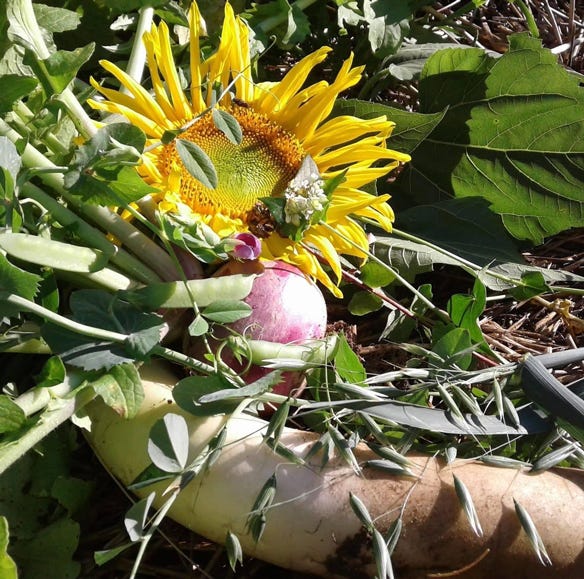January 19, 2022

On their farm in Miami County, Ind., soil health and conservation are top priorities for Jon Reese and his daughter, Sarah Hanes. Reese started using cover crops nearly 25 years ago.
This passion led to more than just using cover crops on their own farm. The father-daughter team continued to learn more about them. Reese attended many conferences on cover crops, while Hanes started selling cover crop seed for La Crosse Seed, headquartered in La Crosse, Wis. They have also learned through trial and error. With this knowledge, Reese, Hanes and her husband, Scott, started a small business helping local farmers implement cover crops into their operations.
The family works with customers to assess their fields and decide which crops are best for the situation. They then seed the cover crops. What started out as a few extra fields for local farm families has expanded into multiple counties. More and more people come to them for their expertise.
Cover crops are not always a priority for farmers. “In the fall, farmers are worried about being in the combine, not trying to get cover crops seeded, which is where we have started to come in,” Hanes says.
The business is still in its developing stages. The Haneses work with people on different test plots on local farms.
Their own experience with cover crops started when Reese frost-seeded clover into a few acres. At the time, soil health wasn’t the hot topic in agriculture that it is now. Reese was just experimenting to see if he could increase nitrogen levels.
Why cover crops
Agronomists say cover crops sequester nutrients, increase nitrogen and phosphorus, help with erosion and water control, and increase organic matter. They are also a way to introduce new species into the crop rotation, help with weed control, and improve soil health and biological activity.
These advantages have been known for quite some time. Still, only about 10% of Indiana farms use cover crops. So, what’s next?
Quite possibly, leaders like the Haneses are onto something. They now use cover crops on all their tillable acreage. They are sold on the value of using cover crops and have made it part of their mission to make sure everyone knows about their benefits.
They started by holding an annual field day at their farm. They hosted soil scientists and soil and water conservation specialists, and offered educational sessions on weed identification and soil health. They dug soil pits and used soil profiles to educate local farmers on the benefits of using cover crops and implementing conservation practices into their operations.
Advice on using cover crops
“Start simple,” Hanes advises. “You want to have something green and living up until planting. It doesn’t have to be a big mix that you plant at a crazy rate.”
She says cereal rye is an easy crop to manage with a good growth rate if you are looking for an option to start out. They have had a lot of success with it.

Reese says one of the biggest mistakes people make is starting with crops that are harder to manage so they think it’s too much work. That experience can discourage them from using cover crops in the future.
“Oats and radishes get really rank and have a lot of growth,” he says. “If those are the crops you want to start out with, don’t plant them at a crazy rate, so the growth doesn’t get out of control.”
Seeing improvements
You won’t start seeing changes overnight. Reese and Hanes say farmers really have to know what they are looking at to understand and see the changes that are occurring.
A soil scientist who attends their field day every year said one of the most noticeable changes is soil color, indicating an increase in organic matter, Reese reports. This shows that cover crops are, in fact, improving the soil over time.
One of the fields Reese and Hanes added to their operation is another prime example of how they have improved the land. This ground was farmed hard. After the land was drained and tiled, they brought in a deep ripper with a 450-hp tractor. When they hit a spot in the field where they killed the tractor, they thought they might have hit a house foundation because the ground was so hard. The waterways were always running brown, no matter how little rain they received.
After their first year with a crop and a cover crop, they report that the waterways run clear after it rains. By implementing a no-till and cover crop system after retiling the field, they have completely changed the field’s water filtration.
Cover crops aren’t new and aren’t going away anytime soon. But farmers are learning new things all the time to improve their use. Leaders like Reese and Hanes are paving the way for the future in making row crop practices more sustainable with cover crops.
Kuhn is a senior in agricultural communication at Purdue University.
You May Also Like




